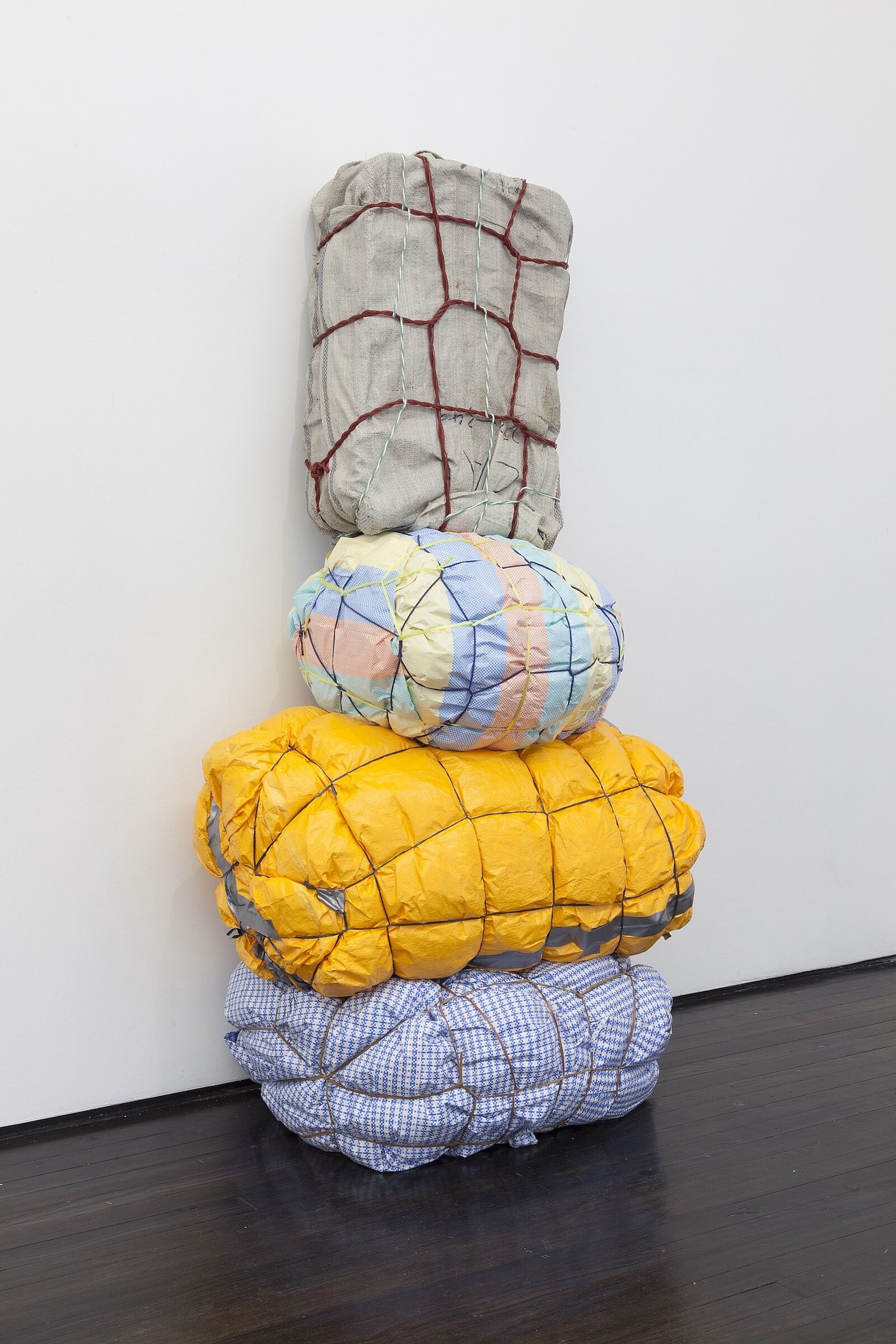Whitney Biennial 2019 | Art & Artists
May 17–Oct 27, 2019
Whitney Biennial 2019 | Art & Artists
Maia Ruth Lee
42
Floor 6
Born 1983 in Busan, South Korea
Lives in New York, NY
In Bondage Baggage, Lee re-creates packages that she grew up seeing in the Kathmandu Tribhuvan Airport in Nepal: luggage that Nepalese migrant workers packed when they returned home from employment in the Middle East. Tightly bound with rope, tape, tarp, fabrics, and cardboard for added security, Bondage Baggage models a condition of the self, as well as concepts of self-preservation, diaspora, the family, and the economic oppression of developing countries.
Maia Ruth Lee’s steel glyphs explore a new lexicon built with appropriated scrap metal motifs. Using salvaged steel elements that usually embellish and strengthen New York’s fences and window-bars, Lee explores ideas of boundary, security, and translation, so that LABYRINTH functions as a sculptural glossary of decorative armor. Lee intends for these steel glyphs in LABYRINTH to slow our attention. She notes that unlike a maze, which invites us to puzzle a solution out of its many pathways, a labyrinth offers a single route and a meditative experience.
Bondage Baggage Prototype 4, 2018
-
0:00
Maia Ruth Lee, Bondage/Baggage
0:00
Narrator: These two sculptures were inspired by Maia Ruth Lee’s travels to and from Kathmandu, Nepal, where her parents live.
Maia Ruth Lee: I started noticing at the airport, on the conveyor belt, the luggage that was coming back from the Middle East, where the Nepali migrant workers mainly work. There was a very particular way they would wrap their luggage.
Narrator: Maia Ruth Lee.
Maia Ruth Lee: It would be bound, packaged, wrapped, multiple times. And it’s because the airport is also infamous for taking things out of people's luggage. I was just drawn to these objects as objects, just because they were so beautiful, and also they all had this very similar feel to them, this very handmade, very genuine sense of self-preservation.
And I really just sat with this idea for a long time. What do I do with this? I want to do something with this and the idea behind migration, diaspora, working abroad.
Eventually, I decided just to create my own that looked very much like these packages that I'd seen. The idea of labor is definitely in there. The idea of enslavement is definitely in there too, obviously, just from the aesthetical standpoint.
-
0:00
Maia Ruth Lee, LABYRINTH
0:00
Maia Ruth Lee: My name is Maia Ruth Lee. I'm an artist based here in New York. My background is Korean, but I grew up in Nepal, and then I immigrated to the US in 2011.
Narrator: Lee calls these metal objects glyphs, suggesting a kind of pictorial language.
Maia Ruth Lee: I think altogether I've made probably over 100 pieces, and I've shown them in different iterations, some a more literal alphabet system, some more related to symbols, and signs, and astrology, perhaps.
I think language was always a part of my life. My parents are linguists, and their job was to translate the Bible into Sherpa, which is one of the very many languages in Nepal.
The idea of translating not just a language, but also a philosophy, and also culturally—what does that mean? It was always something that was brewing in my mind.
I wanted to come away from the idea that these were more linguistical forms to them being more objects of purpose, and objects that carried a lot more meaning than just a phonetic sound or a meaning. But something a little deeper than that. So I called them tools for self-protection. So there’s a bit of a spiritual layer to some of these pieces.

